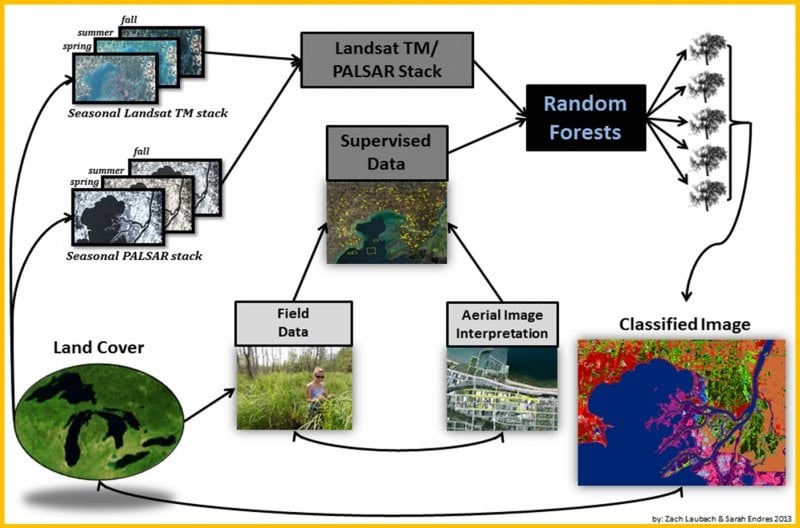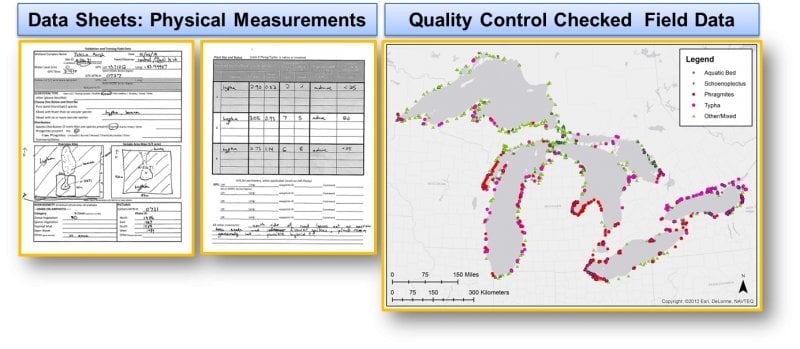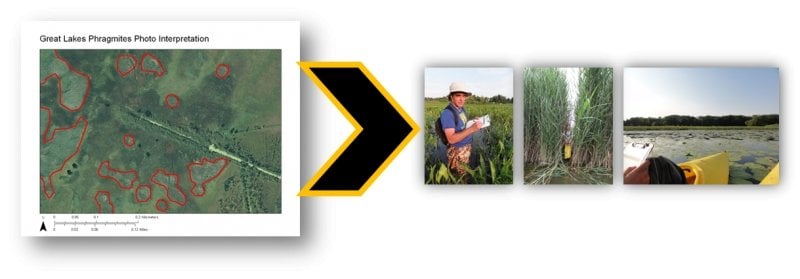Long-term monitoring of Great Lakes coastal wetlands is currently accomplished using SOLEC (State of the Lakes Ecosystem Conference) or GLEI (Great Lakes Environmental Indicators) indicators. The weakest element of these management tools is their reliance on old, incomplete, and static landscape-scale data. This severely impacts the monitoring system's ability to detect the extent and effect from two of the most significant coastal wetland stressors: development and invasive plant species. Our map will be the first comprehensive wetland delineation of the binational coastal Great Lakes, and will include adjacent land use and at least two invasive plant species: Typha spp. and Phragmites australis.

Goal
- Identify and classify coastal wetlands and adjacent land use for the entire coastal Great Lakes basin (an area of approximately 92,000 square kilometers) with contemporary (2007-2011) satellite imagery of moderate resolution (10-30 meters) from multiple sources.
- Follow the recommended approach of the Great Lakes Coastal Wetlands Consortium to provide a comprehensive regional baseline map suitable for coastal wetland assessment and management by agencies at the local, tribal, state, and federal levels.
Methods
Random Forests
- The machine learning algorithm works by creating many decision trees from random samples of the input training data.
- Highly trained image interpreters select the training data by delineating polygons around known Land Use \ Land Cover (LULC) areas on the seasonal imagery stacks (Landsat and PALSAR, left).
- Random Forests then creates a forest of decision trees (500) using a different random subset of training data for each tree.
- Each decision tree is then used to predict LULC for the entire scene and individual pixels are placed in the class selected by the majority of trees.
Field Data
- Data sheets used to collect physical measurements
- Quality control used to check data sheets of physical measurements
Multi-Season Passive and Active Satellite Imagery Synthesis
Fusion of moderate resolution (10-30 m) satellite remote sensing from optical and Synthetic Aperture RADAR (SAR) sensors
- Landsat TM optical-IR (30m) / thermal (120m resampled to 30m)
- PALSAR L-band HH and HV polarizations (20m resolution)
Image Interpretation
Summary
Map Validation
Roughly 20 percent of the data is reserved for validation. The validation data is used to calculate user and producer accuracy—overall accuracy goals are 80 percent with individual wetland class accuracies above 70 percent.
94 Percent Overall Basic Accuracy
- Lake Michigan= 95.6 percent
- Lake Erie= 91.9 percent
- Lake Ontario= 85.6 percent
- Lake Huron= 93.1 percent
- Lake Superior = 95.2 percent



